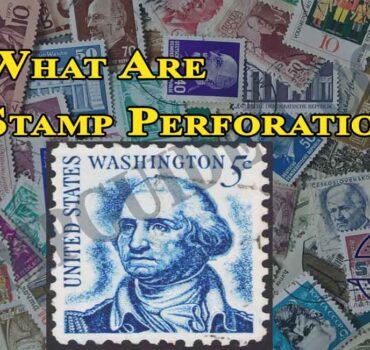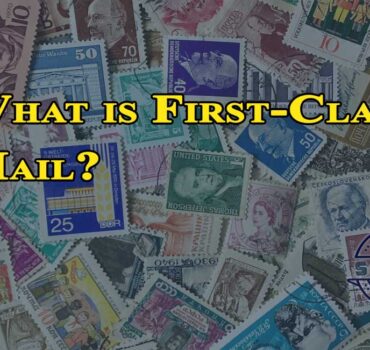Have you ever been frozen in front of your mailbox, greeting card in hand, wondering if you should go back inside and put another stamp on your envelope to make sure your card hasn’t returned? You’re not alone!
When sending a very heavy envelope containing a greeting card, you want to make sure that the envelope is not returned.
The USPS and the Greeting Card Association or GCA worked together to create a special seal that would work for all of their commemorative cards; the butterfly stamp.
With the large number of large, oddly shaped and often heavy greeting cards currently in circulation, the amount of postage required to deliver a card is increasing. However, the United States Postal Service (USPS) and the Greeting Card Association (GCA) have the solution to your problem: the Butterfly Stamp.
Table of Contents
What is a butterfly Stamp?
The Butterfly Seal was launched by the USPS, in conjunction with the GCA, in May 2010 as a new stamp series to make it easier for greeting card customers to find out the postage amount on their envelopes. The Butterfly Stamp series, identified by its large butterfly motif, was created for irregularly shaped cards that require additional postage. Commemorative cards that require the butterfly stamp are marked with a butterfly silhouette printed on their envelopes.

In 2010, the USPS and GCA decided to create a new series of stamps specifically designed for greeting cards.
Customers often found it difficult when they wanted to send their greeting cards because they didn’t know how many stamps to add and how many stamps to use to ensure their cards get to their destination successfully.
Greeting cards come in all shapes and sizes these days, and Butterfly stamps are specially designed to fit those oddly shaped cards and envelopes, ensuring that they cover the postage, so your card not returned.
The shipping cost on the butterfly seal covers both the 1oz first class postage (equivalent to a standard Forever seal) and the additional non-machinable charges.
What is a non-machinable supplement?
An unusable surcharge is an additional mailing charge by the USPS on first class letters that do not fit into the Postal Service’s automated processing system and therefore must be manually canceled by USPS personnel. The non-machinable surcharge in the US is currently $ 0.15.
When should I use a butterfly Stamp?
GCA has worked with the makers of commemorative cards to make using the butterfly seal as easy as possible. Participating greeting card makers printed an image of a butterfly silhouette on their envelopes, with the text “butterfly stamp or equivalent postage required”.
A butterfly stamp should be used in place of a standard Forever stamp in first class mail when an envelope:
- Is square or does not match the proportion of a standard envelope (length divided by height not between 1.3 and 2.5)
- It is rigid and does not bend easily
- Contains elements that make the casing uneven, including clasps, ribbons or buttons
- Has an address parallel to the shortest dimension of the letter
- If you do not have a butterfly stamp handy, several equivalent postage stamps are accepted, but using the butterfly stamp saves you too much postage.
- Your envelope is very hard and does not bend easily.
- Your envelope is square.
- The size of the envelope does not match the proportion of the standard envelope.
- The envelope or greeting card contains elements that make it a little less uniform. This includes clips, clasps, ribbons, and flowers.
- The envelope contains an address parallel to the shortest dimension of the letter.
What if I don’t have a butterfly Stamp?
If you can’t find a butterfly stamp, you can still send your greeting card and it will arrive at its destination.
You can add multiple stamps to your envelope to ensure you pay the correct postage.
However, the addition of a butterfly stamp ensures that you will not pay any additional fees.
How much does a butterfly stamp cost?
A butterfly seal currently costs $ 0.70. Similar to a Forever stamp, butterfly stamps will always be honored with the postage printed on them. To find a place to buy butterfly stamps near you, see our other article on Where to Buy Stamps.
What is the current butterfly stamp?
On January 27, 2019, the USPS released the seventh series of the Butterfly Seal. The newest butterfly stamp features the California Dogface butterfly (Zerene Eurydice). The label, which depicts a stylized but minimalist image of a California Dogface man, was digitally created by nationally renowned artist Tom Engeman and designed by art director Derry Noyes.
The California Dogface, the insect of the state of California, owes its name to the distinct yellow “dog head” markings on the wings of the species’ males, which resemble the unmistakable profile of a poodle. This isn’t the first time that California Dogface has appeared on a label; in 1977, it was one of four butterflies that appeared on a 13-cent stamp sheet, on which it was labeled Colias Eurydice.
Previous Butterfly Stamp installations, all illustrated by artist Tom Engeman, included the 2010 Monarch Butterfly stamp ($ 0.64), the 2012 Baltimore Checker spot Butterfly ($ 0.65), the 2013 Spice bush Swallowtail Butterfly (0.66 $), the 2014 Great Spangled Fritillary Butterfly ($ 0.70), the 2015 Oriental Tiger Swallowtail Butterfly ($ 0.71), and the 2016 Oriental Blue-tailed Butterfly ($ 0.68).
Conclusion
If you have a unique postcard or envelope that you want to send, you will probably need to use a butterfly stamp.
This stamp was explicitly designed to send out oddly shaped envelopes containing greeting cards which may be very hard, very thick, or may contain multiple elements which make the thickness uneven.
In most cases, you will see a butterfly silhouette on the envelope, indicating that you should use a butterfly seal to ensure that your envelope arrives safely at its destination.
While you can use regular stamps, a butterfly stamp ensures that you won’t pay extra for your mail postage.


